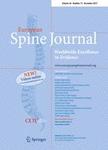版权所有:内蒙古大学图书馆 技术提供:维普资讯• 智图
内蒙古自治区呼和浩特市赛罕区大学西街235号 邮编: 010021

作者机构:IRCCS Osped Galeazzi St Ambrogio Milan Italy Elsan Polyclin Jean Villar Brugge France King Faisal Specialist Hosp & Res Ctr Spine Surg Dept Riyadh Saudi Arabia Hosp Univ La Paz Spine Surg Unit Madrid Spain Vall D Hebron Hosp Spine Surg Unit Barcelona Spain Schulthess Klin Zurich Switzerland Acibadem Univ Spine Ctr Sch Med Istanbul Turkiye Bordeaux Univ Pellegrin Hosp Bordeaux France
出 版 物:《EUROPEAN SPINE JOURNAL》
年 卷 期:2025年
页 面:1-11页
核心收录:
学科分类:1002[医学-临床医学] 100210[医学-外科学(含:普外、骨外、泌尿外、胸心外、神外、整形、烧伤、野战外)] 10[医学]
基 金:DePuy Synthes
主 题:Adult spine deformity Spine deformity surgery Machine learning algorithm
摘 要:PurposeThe choice of the best management for Adult Spine Deformity (ASD) is challenging. Health-related quality of life (HRQoL), comorbidities, symptoms and spine geometry, along with surgical risk and potential residual disability play a role, and a definite algorithm for patient management is lacking. Machine learning allows to analyse complex settings more efficiently than other available statistical tools. Aim of this study was to develop a machine-learning algorithm that, based on baseline data, would be able to predict whether an ASD patient would undergo surgery or *** evaluation of prospectively collected data. Demographic data, HRQoL and radiographic parameters were collected. Two clustering methods were performed to differentiate groups of patients with similar characteristics. Three models were then used to identify the most relevant variables for management *** from 1319 patients were available. Three clusters were identified: older subjects with sagittal imbalance and high PI, younger patients with greater coronal deformity and no sagittal imbalance, older patients with moderate sagittal imbalance and lower PI. The group of younger patients showed the highest error rate for the prediction (37%), which was lower for the other two groups (20-27%). For all groups, quality of life parameters such as the ODI and the SRS 22 and the Cobb angle of the major curve were the strongest predictors of surgical indication, albeit with different odds ratios in each *** clusters could be identified along with the variables that, in each, are most likely to drive the choice of management.